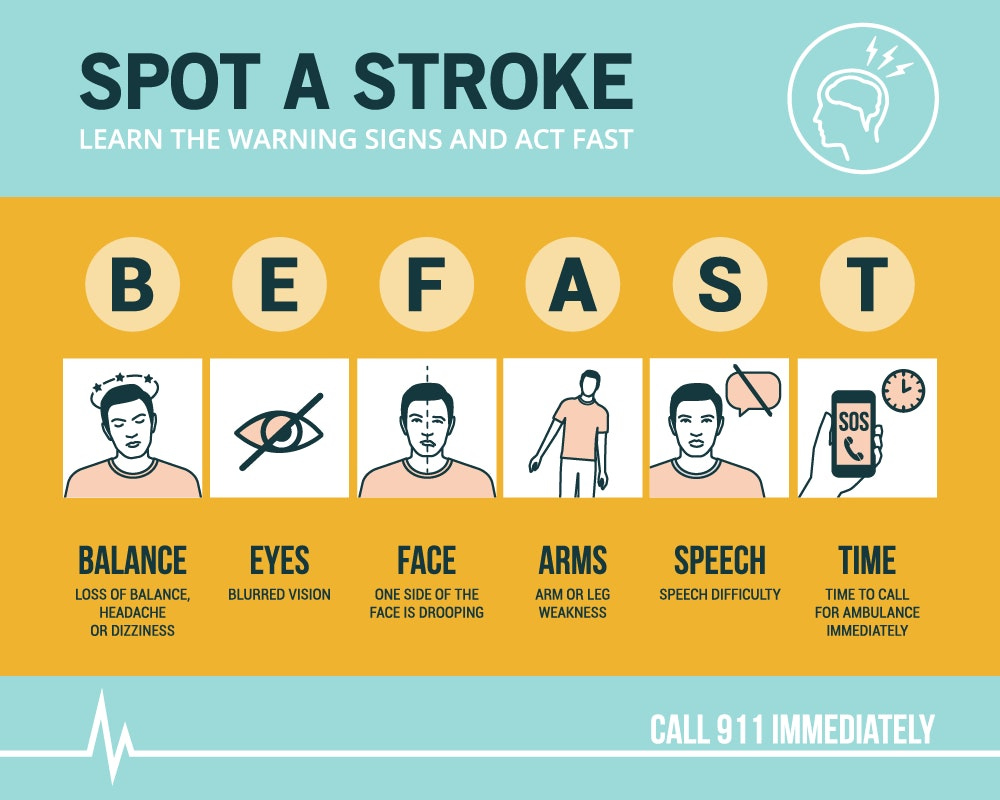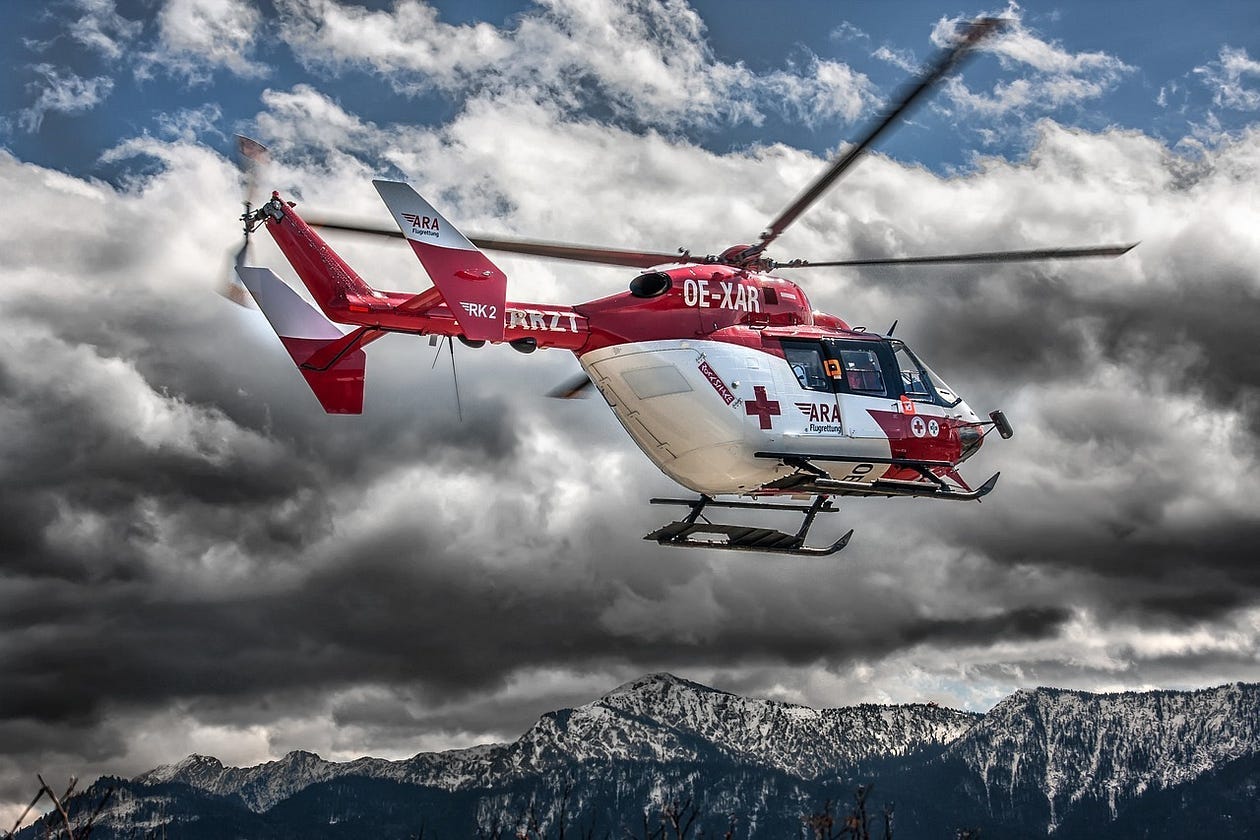Hi Everyone!! Thanks for joining me again for Week 2 of our “Deep Dive Into Strokes” series. If you would like to check out any of the previous articles, you can find them in my pub, “Surviving Modern Medicine.”
I’m so excited to share today’s topic with you! In my opinion, this is the most important information I want you to take away from this series (along with prevention, of course).
Reading this article could save your life someday! I know that sounds dramatic, but I’m being serious.
Today, we will cover the effects of a stroke, how to identify one (There’s a fun little mnemonic device), and how to respond if you think you’re having one. All super important topics!
My Personal Story
In the first article of this series, I wrote about my very detailed experience of having a stroke for the first time. Even as an educated registered nurse, it still took me a little while to connect the dots. I knew one-sided weakness and numbness were stroke symptoms, but I looked for ANY other cause.
I convinced myself that I had injured a nerve in my arm while playing tennis. Looking back, I was probably in denial. Nobody wants to admit that they may be having a stroke. Our brains try to justify or blame the symptoms on anything else.
Finally, the stroke hit the speech and language part of my brain, making it too obvious to ignore. I was extremely lucky because I had the classic symptoms of a stroke. Had I not had those textbook symptoms, I probably would have put off getting help.
As we’ll learn today, time is excruciatingly important when having a stroke. Many people don’t have textbook signs, so they blame their symptoms on something else. Let’s look at the effects of a stroke and what types of symptoms you might have.
Effects of a Stroke
The effects of a stroke can be vast and vary significantly. They depend primarily on the location of the obstruction and how much brain tissue is affected.
Because one side of the brain controls the opposite side of the body, a stroke affecting one side will result in symptoms on the opposite side of the body. For example:
Left Brain stroke can cause:
Paralysis on the right side of the body
Speech and Language problems
Slow, cautious behavior style
Memory loss
Right Brain Stroke can cause:
Paralysis on the left side of the body
Vision problems
Quick inquisitive behavioral style
Memory loss
Early Signs of Stroke
Studies show that many strokes don’t just happen out of the blue. Before a major stroke, there are often warning signs or “mini strokes” (TIAs, which often resolve on their own).
There are 3 typical early signs of a stroke:
Sudden numbness/weakness in your face, arm, or leg on one side of the body.
Sudden trouble seeing in both or one eye.
Sudden trouble speaking, confusion, or difficulty understanding speech.
A few weeks before my stroke, I remember having numbness in my pinkie and ring finger. I even joked to my mom about having a stroke. After about an hour, it went away, so I thought it must not have been too serious. Looking back, I should have gone to the hospital. They might have been able to catch my stroke before it happened. What’s that saying? “Hindsight is always 20/20”, right?
Identifying a Stroke “B.E. F.A.S.T.”
So how do you know if you or your loved one is having a stroke? The easiest way to spot a stroke is by using the B.E. F.A.S.T. Warning signs.
B.E. F.A.S.T. Warning Signs
B. = Balance — Does the person suddenly have trouble with balance or coordination?
E. = Eyes — Is the person suddenly having blurred or double vision, or have they suddenly lost the vision in one or both eyes without pain?
F. = Facial Drooping — Ask the person to smile. Is their smile uneven? Does one side droop?
A. = Arm Weakness — Is one arm weak/numb? Ask them to raise both arms. Does one arm drift down?
S. = Speech Difficulty — Is speech slurred?
T. = Time to Call 911 — A Stroke is an emergency! Every Minute Counts!! Call 911 immediately and note the time when any of the symptoms first appear.
Above are the most noticeable symptoms to recognize, but there are several other stroke symptoms to be aware of, like:
Numbness or Weakness of the face, arm, or leg, especially on one side of the body
Confusion, trouble speaking or understanding speech
Trouble seeing in one or both eyes
Trouble walking, loss of balance, dizziness
Severe headache with no known cause
Responding to a Stroke
Now that you know what to look for, what should you do if you think you or someone you love is having a stroke?
If you suspect someone is having a stroke, do these three things:
Call 911 Immediately
Note the time you first see symptoms
Perform CPR if Necessary
DO NOT:
Do not let them sleep or talk you out of calling 911.
Do not give Aspirin — Aspirin is helpful for 87% of strokes. The other 13% of strokes are caused by brain hemorrhage. If you give them a blood thinner like Aspirin, you will make them bleed out faster. There is no way to tell the type of stroke you are having without a CAT Scan, so don’t risk it.
Do not drive yourself or someone else to the hospital. The ambulance is more equipped to handle stroke patients.
The absolute most important thing you can do for someone who is having a stroke is call 911 and get help immediately.
Every minute counts!
Why is Time So Important?
Delays in receiving stroke treatment significantly reduce the effectiveness of life-saving treatments. For example, the main clot-busting medication called tPA must be given within 4 hours of the stroke symptoms starting. Any delays in treatment will increase the risk of lasting disabilities and death from the brain not having oxygen.
In a recent study, almost 80% of people having a stroke arrived at the hospital over 2 hours after the onset of their symptoms. That doesn’t give the healthcare team much time to react.
Many people believe that symptoms will resolve on their own or are mild until they aren’t. Even if you think there might be a very small chance you are having a stroke, go get checked!!!
Don’t be a statistic!!!
Thanks so much for stopping by! I hope you continue learning about strokes and other important medical issues with us by subscribing below!
You can also help support my writing by Buying Me a Coffee when you click the big pink button below. Thanks so much for your support!









Thank you for this information.
Excellent advice here LaurenJane. Thank you for using your personal experience and medical background to inform others about strokes. Your articles could end up saving lives now that our health system is more shattered than ever by the current administration. 🙏💎🌹